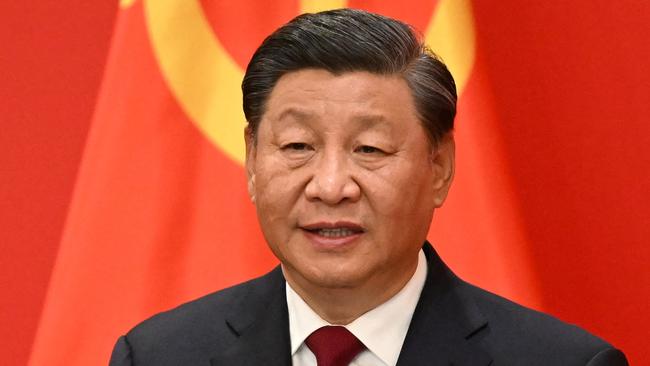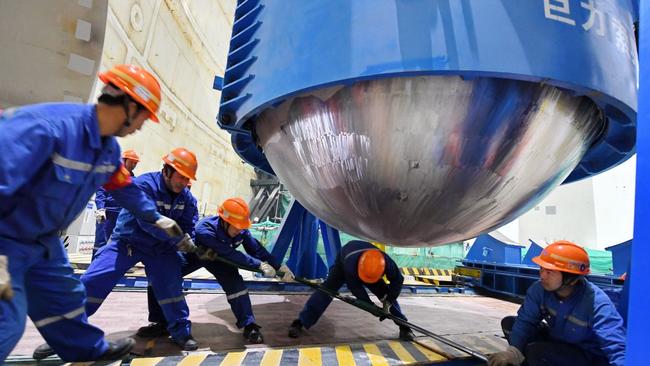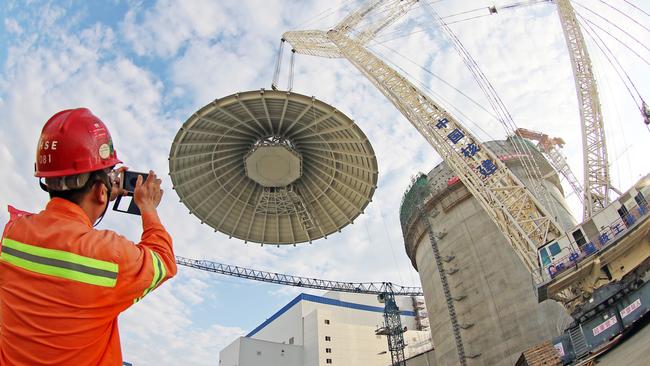
But they plan totally different paths to achieve the same objective. Trump favours oil, gas and coal while Xi has started implementing a remarkable plan to slash carbon emissions while achieving a low cost and reliable outcome.
In my commentary on the 12 policies of Donald Trump energy was number one
Trump aims to enable the US to have the lowest-cost energy and electricity of any nation in the world, including China.
China is taking up the challenge. It believes that by thee 2030s it will be able to match US power costs while slashing carbon emissions.
The Asian region, including Japan, has become very emission conscious.
Australia could have been a leader but there is regional agreement emerging that Australia’s pathway is high-cost and unreliable, and will require massive subsidies.
But the region is horrified by the Trump plan so as China’s technology is marketed in the region in coming years it will be adopted by many countries.
Whether we like it or not, to be competitive Australia will need to embrace at least part of the Xi plan especially as is ideally suited to Australia.
Over Christmas/New Year a number people I talked to were in China and were told how the China plan is evolving.

It is instructive to start by relating what is happening in the electricity world today in relation to developments since the Second World War.
Strangely, we are now going back to the 1950s.
In the two decades that followed the 1945 armistice there was a massive need for electricity as industrial and personal consumption surged.
The world concentrated on two main sources of power – uranium and hydro. Neither created carbon emissions. But the then equivalent of the today’s greenies didn’t like uranium waste or the environmental impacts of large hydro schemes.
Accordingly, they pushed the world into using coal and gas for power generation and accelerated the level of carbon emissions.
Today’s global push for substantial reductions in carbon emissions has a much wider community support base although the popular appeal in the US for Donald Trump’s policies shows that America is split. And that split extends to Australia and is inflamed by the implementation of policies that are increasing costs and lowering reliability.
Enter Xi Jinping.
The China plan is an attempt to reduce emissions in a structured way but implementing the first part of the plan confused the world.
On the one hand the Chinese President made positive remarks about carbon reduction but then ordered a large number of coal fired power stations.
Understandably the rest of the world thought that Xi was playing games. It didn’t understand that the role of those coal fired power stations was to provide power security as new technology was developed and investment made in wind, solar, and other “conventional” emission reduction schemes.

Xi was very proud when the 2023 numbers came out showing that although China grew at a faster rate than the US, its carbon emissions expanded at a lesser rate.
The function of coal powered stations in any modern low carbon network is to provide stability for the system in the full knowledge that coal will be replaced as better technologies are developed to do the same job as coal with much lower emissions.
Importantly, in China’s replacement of coal there will be conventional nuclear power plus the small nuclear cells that are being embraced around the world.
Many years ago Air Power Australia discovered that China was experimenting with molten salt cooled thorium powered generators in nuclear submarines. Many other countries were working on similar thorium projects but without the impetus that comes from defence related applications.
Back in the 1950s the world decided to use uranium as a nuclear fuel rather than thorium. Uranium has a waste problem and by-products can be used to make nuclear bombs. Molten salt cooled Thorium generators don’t require large amounts of water, the by-products can’t be used for bombs and there is very little waste.
China’s massive Bohai Shipyard located at the Huludao Port, on the northern coast of the Bohai Sea, has spearheaded China’s nuclear powered submarine expansion including the development thorium as a submarine power source.
In 2016, Bohai erected a massive 40,000 sqm covered shipbuilding factory to keep its developments away from western satellite surveillance.
The Chinese now believe that the molten salt cooled thorium reactors are now the best available technology to replace coal and underwrite a renewable power network.
There will be many factors influencing China in deciding whether to invade Taiwan but if it does take that step it will endanger the opportunity of becoming the regional leader in carbon emission reduction power generation.
Australia is running down its coal power stations trying to replace them with far too much wind and solar. What we should be doing is maintaining coal stations making sure the existing power grid remains intact and is ready for the replacement of coal by small conventional nuclear plants, thorium power generation or any other major technology that is developed.
That’s what China is doing.







China’s President Xi Jinping and the leading Republican presidential candidate, Donald Trump, both have the same aim – to have their nations among the lowest cost energy producers in the world.